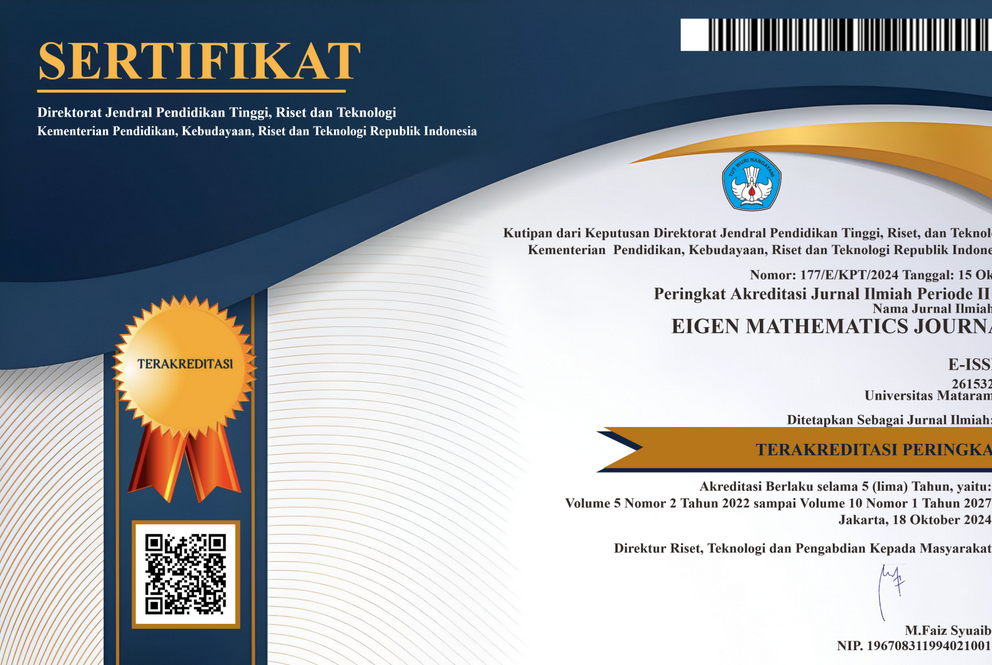Comparison of Data Mining Methods in Classifying Village Status of Purwakarta and West Bandung Regencies (Podes 2021)
DOI:
https://doi.org/10.29303/emj.v6i1.156Keywords:
Villages Status, Decision Tree, Support Vector Machine, Naïve Bayes, Random ForestAbstract
Each village has different characteristics and is constantly changing along with the level of development in a village. These changes in conditions are used as indicators to classify villages into urban or rural village status. In this study, researchers will compare or evaluate of several data mining methods, namely decision trees, support vector machines, naïve bayes, and random forests to find the best algorithm in classifying urban villages and rural villages in Purwakarta and West Bandung Regencies. The data used in this study were 357 records and 8 attributes sourced from village potential data (Podes 2021). Furthermore, it was obtained that the best method in classifying urban villages and rural villages is to use random forests with accuracy value and F- score of 0,9.References
Apriliansyah., Pangestika, A., Ramadhanty, A. P., Putra, G. M., Putri, G. S. N. D S., et al. (2021). Klasifikasi Status Desa/Kelurahan DIY (Yogyakarta) Menggunakan Model Decision Tree. Journal Engineering, Mathematics and Computer Sciece, 33–41.
Aryani, Y., & Wijayanto, A. W. (2021). Klasifikasi Pengembalian Radar dari Ionosfer Menggunakan SVM, Naive Bayes dan Random Forest. Komputika: Jurnal Sistem Komputer, 10(2), 111-117.
BPS (2020). Peraturan Kepala Badan Pusat Statistik Nomor 120 Tahun 2020 Tentang Klasifikasi Perkotaan dan Perdesaan di Indonesia 2020. Jakarta: Badan Pusat Statistik.
Bellazzi, R., & Zupan, B. (2008). Predictive data mining in clinical medicine: current issues and guidelines. International journal of medical informatics, 77(2), 81-97.
Chapman, Pete., Clinton, J., Kerber, R., Khabaza, T., Reinartz, T., Shearer, C., et al. (2000). CRISP-DM 1.0 Step by step data mining guides.
Fadlan, C., Ningsih, S., & Windarto, A. P. (2018). Penerapan Metode Naïve Bayes Dalam Klasifikasi Kelayakan Keluarga Penerima Beras Rastra. JUTIM (Jurnal Teknik Informatika Musirawas), 3(1), 1-8.
Hutahaean, Y. M., & Wijayanto, A. W. (2022). Klasifikasi Rumah Tangga Penerima Subsidi Listrik di Provinsi Gorontalo Tahun 2019 dengan Metode K-Nearest Neighbor dan Support Vector Machine. JUSTIN (Jurnal Sistem dan Teknologi Informasi), 10(1), 63-68.
Kemendes PDTT (2021). Rencana Strategis Direktorat Jenderal Pembangunan Desa dan Perdesaan 2020-2024. Jakarta: Kementerian Desa, Pembangunan Daerah Tertinggal, dan Transmigrasi.
Iman, Q., & Wijayanto, A. W. (2021). Klasifikasi Rumah Tangga Penerima Beras Miskin (Raskin)/Beras Sejahtera (Rastra) di Provinsi Jawa Barat Tahun 2017 dengan Metode Random Forest dan Support Vector Machine. JUSTIN (Jurnal Sistem dan Teknologi Informasi), 9(2), 178-184.
Jackson, J. (2002). Data mining; a conceptual overview. Communications of the Association for Information Systems, 8(1), 19.
Kemala, I., & Wijayanto, A. W. (2021). Perbandingan Kinerja Metode Bagging dan Non-Ensemble Machine Learning pada Klasifikasi Wilayah di Indonesia menurut Indeks Pembangunan Manusia. JUSTIN (Jurnal Sistem dan Teknologi Informasi), 9(2), 269-275.
Nisa, I. M. K., & Nooraeni, R. (2020). Penerapan Metode Random Forest Untuk Klasifikasi Wanita Usia Subur di Perdesaan Dalam Menggunakan Internet (SDKI 2017). Jurnal MSA (Matematika dan Statistika serta Aplikasinya), 8(1), 72-76.
Nurkhaliza, A. A., & Wijayanto, A. W. (2022) Perbandingan Algoritma Klasifikasi Support Vector Machine dan Random Forest pada Prediksi Status Indeks Mitigasi dan Kesiapsiagaan Bencana (IMKB) Satuan Kerja BPS di Indonesia Tahun 2020. Jurnal Informatika Universitas Pamulang, 7(1), 54-59.
Nurpiana, A., & Wijayanto, A. W. (2022). Comparison of Models for Classification of Learning Achievement of Middle School Students in Indonesia in 2019 using the Support Vector Machine Algorithm, Conditional Inference Trees, and Random Forest. Jurnal Matematika, Statistika dan Komputasi, 18(3), 447-455.
Putri, N. B., & Wijayanto, A. W. (2022). Analisis Komparasi Algoritma Klasifikasi Data Mining Dalam Klasifikasi Website Phishing. Komputika: Jurnal Sistem Komputer, 11(1), 59-66.
Pramana, S., Yuniarto, B., Mariyah, S., Santoso, I., Nooraeni, R. (2018). Data Mining dengan R. Bogor: In Media.
Sari, M.S., Safitri, D., Sugito. (2014). Klasifikasi Wilayah Desa-Perdesaan dan Desa-Perkotaan Wilayah Kabupaten Semarang dengan Support Machine System (SVM). Journal Gaussian, 751-760.
Supartini, I. A. M., Sukarsa, I. K. G., & Srinadi, I. G. A. M. (2017). Analisis Diskriminan Pada Klasifikasi Desa Di Kabupaten Tabanan Menggunakan Metode K-Fold Cross Validation. E-Jurnal Matematika, 6(2), 106-115.
Syaidatussalihah, & Abdurahim. (2022). Classification of Poverty Status using the Random Forest Algorithm. Eigen Mathematics Journal, 5(1), 37-44.
Wirth, R., & Hipp, J. (2000, April). CRISP-DM: Towards a standard process model for data mining. In Proceedings of the 4th international conference on the practical applications of knowledge discovery and data mining (Vol. 1, pp. 29-39).
Downloads
Published
How to Cite
Issue
Section
License

This work is licensed under a Creative Commons Attribution-NonCommercial-ShareAlike 4.0 International License.
All articles published in the Eigen Mathematics Journal will be available for free reading and downloading. The license applied to this journal is Creative Commons Attribution-Non-Commercial-Share Alike (CC BY-NC-SA).






